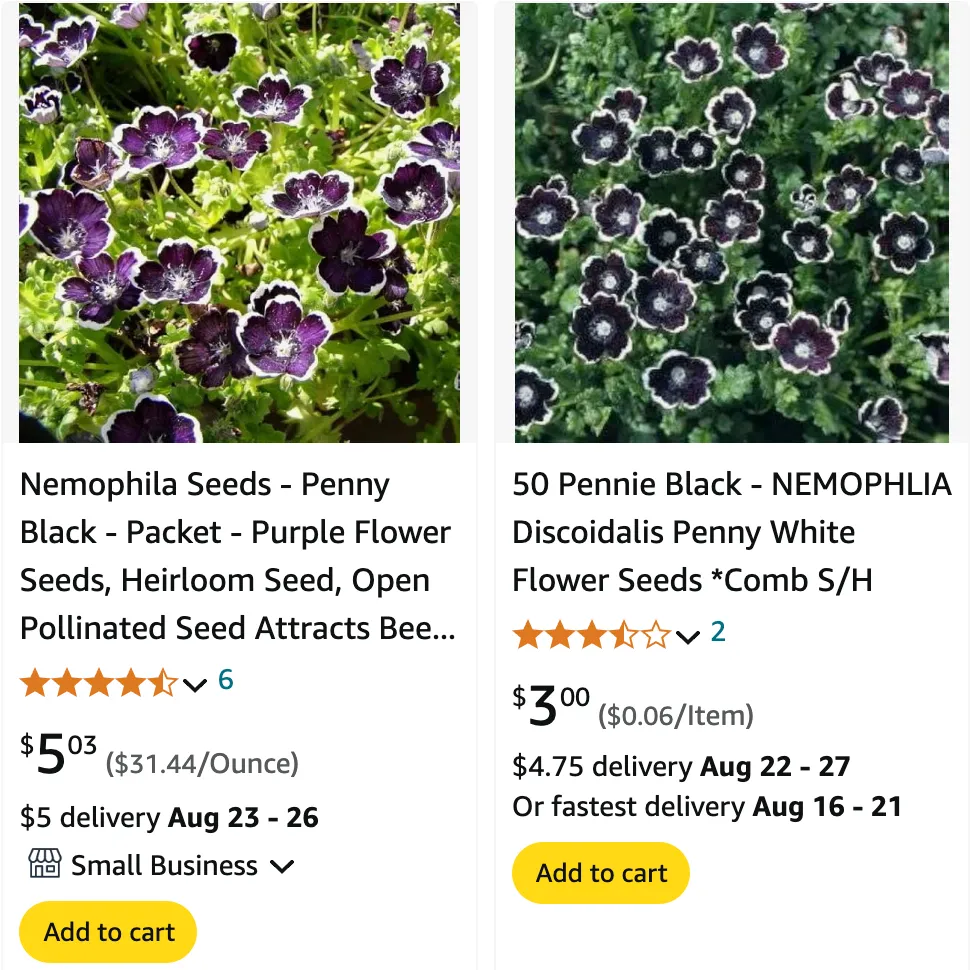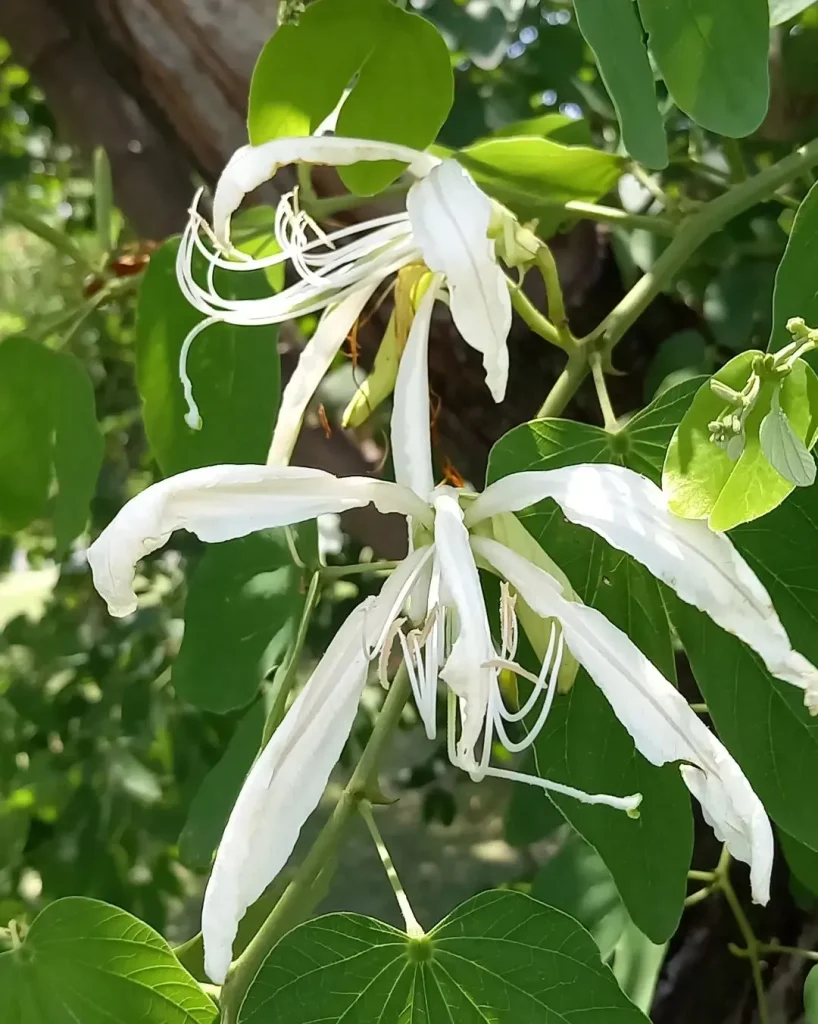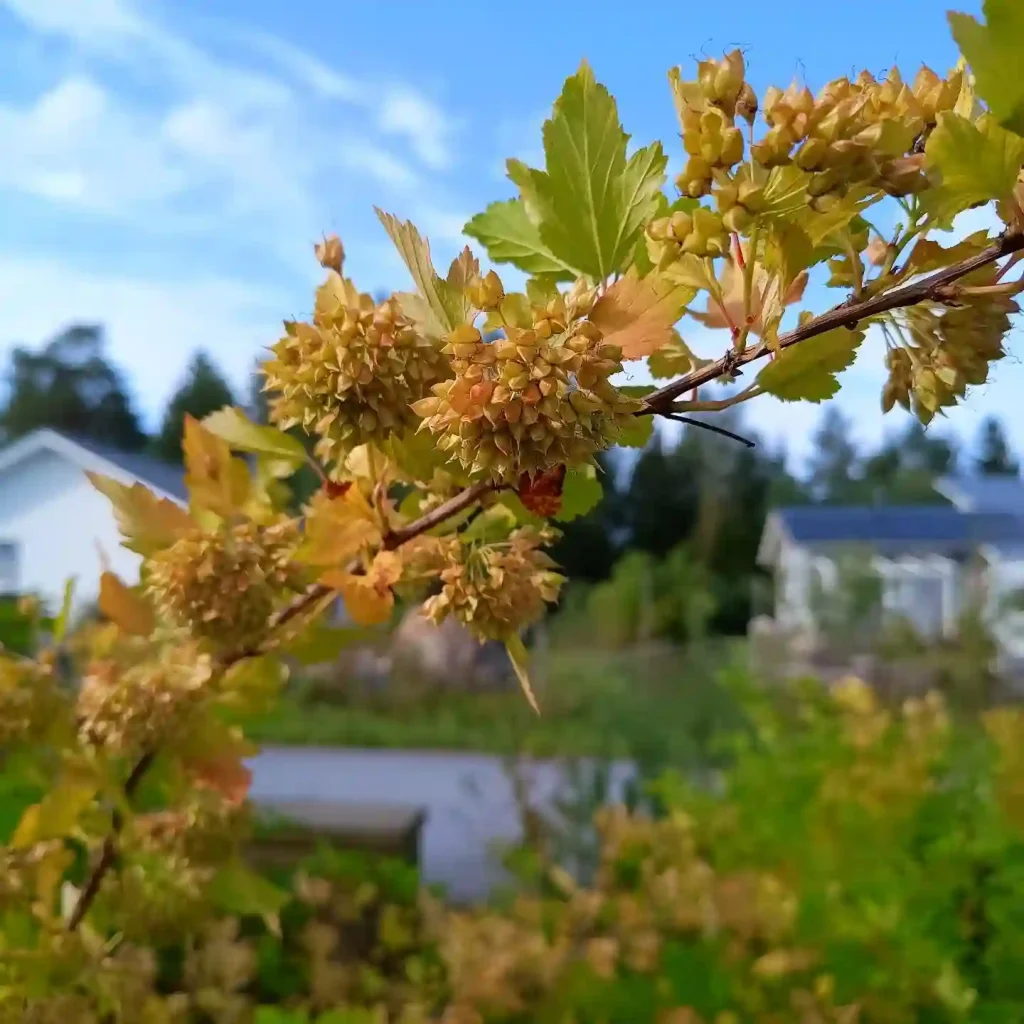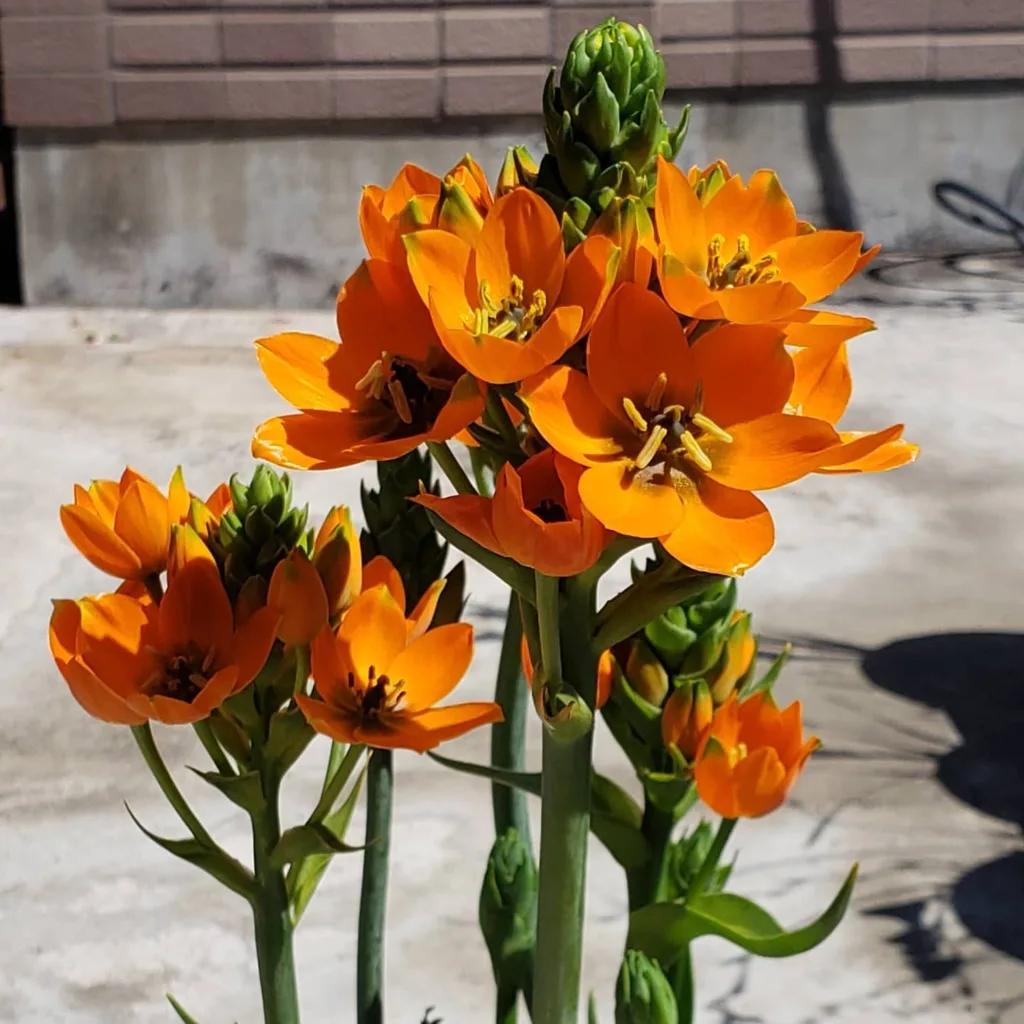
What is Nemophila Penny Black?
Nemophila Penny Black is one of those plants that catches your eye instantly. With its deep black petals and white edges, it’s a stunning annual that stands out in any garden. The flower, also known as Baby Blue Eyes, belongs to the Boraginaceae family, and while most Nemophila varieties are known for their blue blooms, Penny Black is an exception with its dark, velvety flowers. I love how this plant adds a touch of drama to my garden, making it a perfect choice for anyone looking to break the monotony of common flower colors.
13 Species in Genus Nemophila
How to Care for Nemophila Penny Black?
Caring for Nemophila Penny Black isn’t complicated, but it does require a little attention to detail. Here’s what I’ve found works best:
- Light Requirements: These plants do well in both full sun and partial shade. If you live in a hotter region, I recommend planting them where they can get some afternoon shade to protect them from intense heat. In my garden, I’ve found that morning sun and afternoon shade give the best results.
- Soil Preferences: Nemophila Penny Black prefers well-draining soil. I usually amend my soil with compost before planting to give it the richness it needs. The plant thrives in soil with good organic matter, which helps retain moisture without becoming waterlogged.
- Watering Needs: Keeping the soil consistently moist is key to maintaining healthy plants. During dry spells, I make sure to water them regularly but avoid overwatering. Nemophila Penny Black does not like soggy soil, so it’s a balancing act between keeping the soil damp but not drenched.
- Temperature and Humidity: These flowers are cool-season annuals, so they flourish in cooler temperatures. They can tolerate some heat, but I’ve noticed they start to struggle when temperatures rise too high. In regions with high humidity, good air circulation around the plants helps prevent fungal issues.
- Fertilization: I typically apply a balanced, slow-release fertilizer once at the beginning of the growing season. This provides the nutrients Nemophila Penny Black needs to bloom profusely without me having to fertilize constantly.
How to Propagate Nemophila Penny Black?
Propagating Nemophila Penny Black is fairly straightforward, as it’s usually done by seed. Here’s my go-to method:
- Seed Starting: I usually start the seeds indoors 6-8 weeks before the last frost. Using seed-starting trays with a light potting mix, I plant the seeds just below the surface and keep the soil moist. Nemophila Penny Black seeds germinate best in cool temperatures, so I avoid placing them near a heat source.
- Direct Sowing: Alternatively, you can direct sow the seeds in the garden once the danger of frost has passed. I make sure to prepare the soil by loosening it and adding compost. I lightly scatter the seeds and cover them with a thin layer of soil, making sure to keep the area moist until the seeds germinate, which usually takes about 7-10 days.
- Thinning and Transplanting: When the seedlings are large enough to handle, I thin them out to about 6-8 inches apart. If I’ve started them indoors, I wait until the seedlings have a couple of true leaves before transplanting them outside, spacing them similarly.
What to Plant with Nemophila Penny Black?
Nemophila Penny Black pairs beautifully with a variety of plants, and I’ve experimented with several combinations to create visually striking displays in my garden.
- Companion Plants: I love planting them alongside silver foliage plants like Dusty Miller. The contrast between the dark blooms and the silvery leaves is simply stunning. Other great companions include white flowers like Alyssum or Snapdragons, which complement the black and white contrast of Penny Black’s petals.
- Seasonal Pairings: Because Nemophila Penny Black thrives in cooler weather, I often pair them with other cool-season flowers like Pansies, Violas, or Lobelia. This creates a lush and colorful spring garden. As the temperatures warm, you can plant summer-blooming annuals nearby that will take over as Penny Black finishes its bloom cycle.
How to Use Nemophila Penny Black in Your Garden?
Nemophila Penny Black is incredibly versatile, and I’ve used it in different ways throughout my garden. It works beautifully in borders, containers, and as ground cover. Here are a few ideas:
- Border Planting: I like using Nemophila Penny Black as a border plant along garden paths. Its low-growing habit, usually reaching 6-8 inches in height, makes it ideal for edging beds and walkways. The dark blooms create a striking contrast against green foliage or lighter-colored plants behind them.
- Containers: Penny Black also does well in containers, and I love planting them in pots on my patio. When mixed with other annuals, they create a lush, full display that lasts through the spring. Hanging baskets are another excellent option, where the flowers can spill over the sides and create a cascade of dark blooms.
- Ground Cover: In larger garden beds, I’ve used Nemophila Penny Black as ground cover. Planted in masses, they create a carpet of dark flowers that add texture and depth to the landscape. Since they’re easy to grow from seed, it’s an economical way to fill in spaces where you want dense, low-growing coverage.
Troubleshooting Common Issues with Nemophila Penny Black
Even though Nemophila Penny Black is relatively easy to grow, I’ve encountered a few challenges over the years.
- Pests: Aphids and slugs can sometimes be an issue. I regularly inspect my plants and use insecticidal soap for aphids. For slugs, setting out beer traps or using organic slug bait has worked well for me.
- Diseases: Powdery mildew can be a problem if the plants are in overly humid conditions or if air circulation is poor. I try to space the plants out properly and avoid overhead watering to minimize the risk.
- Heat Stress: As I mentioned earlier, Nemophila Penny Black prefers cooler temperatures. If there’s an unexpected heatwave, the plants can wilt or stop blooming. In these cases, I try to give them extra water and a bit of shade until the weather cools down.
Final Thoughts
Nemophila Penny Black has become one of my favorite annuals because of its unique color and versatility in the garden. Whether you’re looking for a striking border plant, a filler for containers, or a ground cover, Penny Black is a beautiful and rewarding choice. With a little care, it can add a touch of elegance and drama to your garden, just as it has in mine.
If i die, water my plants!



